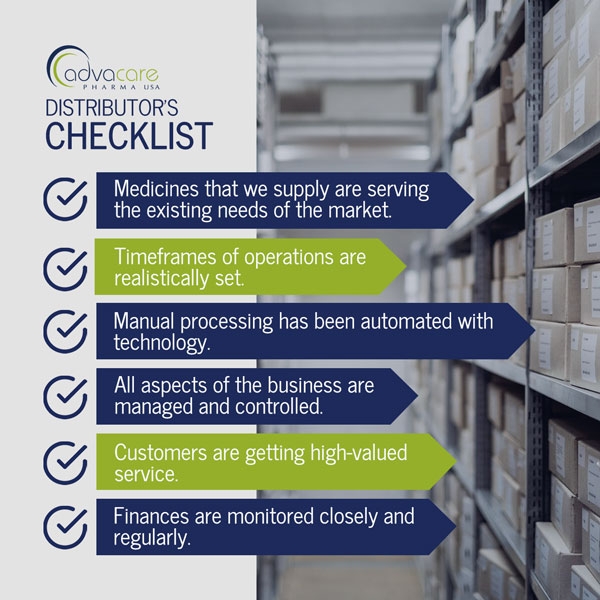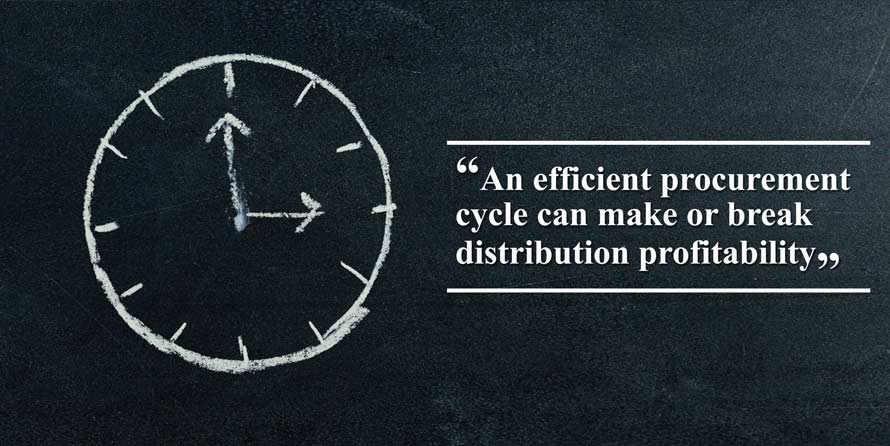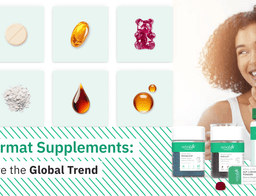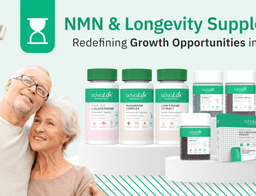Medical Distributor Checklist: How to Accelerate the Growth of Your Business?

Contents Overview

From the historic moment when the movement of goods started many centuries ago, also known as the birth of global trade, distribution processes have been a part of the world’s economy. Beginning in the era of kingdoms and dynasties, global trade and distribution have culminated in deeply rooted 21st-century globalization with extensive distribution networks. Not only are we now able to buy our favorite imported chocolate in a local shop, more importantly, we have to ensure basic supplies like water, food and medicines are accessible to as much of the world population as possible.
Distribution management can be challenging at times, especially for the pharmaceutical industry. Here special safety considerations, local and national laws, quality standards as well as special cold chain management that some of the medicines require, have to be strictly followed. In addition, things get even trickier in the developing world, where the drug distribution chain is especially fragmented and therefore complicated in comparison with developed countries where only a handful of large corporations control the chain. But to the benefit of the end consumers, being the patients, distributors in developing markets are bravely tackling many of the obstacles and are ensuring that essential medicines and medical supplies in some of the most exposed regions are being distributed daily.
Starting and maintaining full control of a pharmaceutical distribution business is no easy task. After researching your market and competitors, identifying suitable pharma and medical products for your market, building strong and reliable relationships with suppliers, establishing a warehousing facility and shipping process, constructing and facilitating a strong sales process, acquiring your first clients and setting up the first orders – your work has only begun. It comes with everyday challenges, where the overwhelmed feeling isn't uncommon, but surely you can agree that the rewards can be tremendous, not only financially but also for the healthcare of fellow citizens that rely on your products.
Yet, in order to accelerate the growth of your day-to-day operations and drive successful results, a distributor must pay much attention to all aspects of the business. So we have prepared a checklist that will help you with just that. Make sure you can tick every box!
Key to Growth #1

Are medicines that we supply serving the existing needs of the market?
In the beginning, it is important to understand the difference between a distributor and a merchant. Distributors have a proper network and plan in place, including a full range of products, while merchants purchase and sell only based on supply and demand. Distributors might take losses on some products, but realize the importance of having a full range of products to utilize economies of scale and scope, and in the process gain a larger customer base. On the other hand, merchants simply look for shortages in the market and look to fill those shortages for short term gain. So ask yourself – are you a distributor or merchant? If you are a merchant, then it is time to reevaluate your business model and decide your future!
You must understand your customers' needs in order to perform well in the long run
Even if you haven’t done extensive supply and demand research yet, and have still been successful so far, you must understand your customers' needs in order to perform well in the long run. Besides the analysis of the competitors, who are present in every industry, it is smart you also consider seasonal illnesses and diseases since you are dealing with the health sector. In this way, your results may imply which medicines or devices you should stock up for which part of the year. Don’t forget to think about the expiration dates of the products here. In addition, in order to make the selection process more efficient, you should consider buying and testing products from your competitors too. This will help to identify your strong and weak points, and it might even get you thinking about finding your niche, which you can dominate if the market is otherwise already saturated. For example, if you only distribute pharmaceuticals, but then expand your product range to include nutraceuticals as well, you can even be the one finding the next “big” item for your market.
Key to Growth #2
Are operations timeframes realistically set?
An efficient procurement cycle can make or break distribution profitability. While software can automate this process, even simple careful planning can mitigate excessive stocking or running out of stock prematurely. The procurement cycle must include additional days to account for unforeseen delays and cost overruns, so better to prepare for both. Trial and error can result in a perfected, accurate cycle that will optimize cash flow and profitability.
Did you consider the expiration dates of the drugs here as well? When working with sensitive products like medicine, that may also require extensive documentation for importing, it is extremely important to set realistic timeframes. Even if they can sometimes seem long, operating efficiently and not only turning over your inventory quickly, is the key to success.
Key to Growth #3
Has manual processing been automated with technology?
While it is true those processes can all be done by pen and paper, automation reduces wasted man hours, which could be spent opening new doors that will lead to your business growth.
Automation reduces wasted man hours, which could be spent opening new doors that will lead to your business growth
Not only that it can help you with your timeframe planning, but it is also foremost valuable for ordering processes, inventory control, shipping processes, client management, accounting and much more.
Much of this technology is nowadays quite affordable, even being accessible via mobile phones or tablets. So make sure you are not falling behind your tech-savvy competitors who might already be running a fully automated business. Developing software solutions might be time and cost intensive, but you have to perceive such as an investment which will have a significant ROI.
Key to Growth #4

Are all aspects of the business managed and controlled?
Team members of distribution B2B companies usually do great in building relationships with potential customers, but often lack the creative ideas for how to go that extra mile and acquire even the most demanding customers.
If your business doesn't have a developed brand or network yet, consider hiring a professional to develop your logo, name and other brand components. Your business should also define its vision and mission to give your customers a sense of what difference you aim to achieve in their market. Likewise, also consider other duties or projects to outsource, as opposed to doing in-house, which can save both costs and time.
On the products side, keep in mind that all AdvaCare distributors benefit from great marketing and promotional support. So make sure you talk to your assigned salesperson about the details of promotional materials, website and product packaging that AdvaCare can offer in order to boost brand position and increase sales in your market.
In the end, your business might be lacking support in other areas, but the budget wouldn't sustain hiring an additional team member full-time. Consider sourcing help from a respective agency or consultancy for those occasional tasks or one-time projects.
Key to Growth #5
Are customers getting value-added services?
Even if you can compete on a pricing basis in your market, or you are the only one supplying some products, you should offer a professional service to your customers. This will automatically gain a competitive advantage with those who might be thinking to switch to the competition. Slashing margins and counting on a higher volume of sales because of it, is not a good strategy to go with for long-term growth, especially as a pharmaceutical distributor.
A convenient experience for your clients should be the norm, which will build strong and lasting relationships. Other aspects in sales that could also add value include offering free or discounted deliveries, giving away additional product information or promotional materials, more extensive product training, creating an incentive program, or even something as menial as giving lighting fast responses when communicating with the customer. In the end, you shouldn’t forget about any possible complaints to which you should reply transparently, and humbly to make even the most difficult customers feel valued.
Key to Growth #6

Are finances monitored closely and regularly?
It is important you are always aware of your current cash flow situation, acknowledging the usual 90-day payment terms and even planning for unwanted delays that may occur, whenever possible.
Offer extended credit only to the most trustworthy and valuable customers if really needed, and try not to give in to extended payment plans. You can consider a price structure which provides lower price points for upfront payments and higher price points for longer payment terms.
Lastly, ensuring that payments are received on-time should be one of your top priorities. A smart way to ensure all of this would be to generate regular financial reports – as a matter of sound financial responsibility, you should thoroughly review your updated P&L (Profit & Loss) and Balance Sheet on a monthly basis, and adjust your financial planning on a quarterly basis to remain flexible and structured at the same time.
Don't want to miss the next AdvaCare article?

Recommended Content

How Distributors Can Win With Multi-Format Supplement Portfolios Aligned to Global Trends


Why Distributors Can’t Afford to Miss the Collagen & Beauty Supplements Boom in 2026


Distributor Trends 2026: NMN & Longevity Supplements Leading the Next Growth
